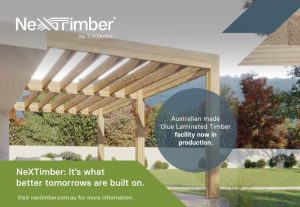THE end of conversion of native forests to plantations, development of alternatives to clearfelling, absence of chemicals in water samples, more open communication and closer ties with the community are among achievements listed in Forestry Tasmania’s 2007/08 Sustainable Forest Management Report.
The report provides an overview of Forestry Tasmania’s progress against set forest management objectives and targets, and key outcomes include:
• an improved understanding of carbon sequestration in state forests, with the amount of carbon stored in state forests expected to increase by 31 million tonnes to 357 million tonnes by 2050
• end of conversion of native forests to plantations – announced on June 1, 2007
• development of alternatives to clearfelling in old growth forest with partial logging contributing to 67 percent of the total old growth area harvested
• 304,000 cubic metres of high quality sawlog supplied to customers
• sale of high quality veneer billets to Ta Ann peeler veneer mills in the Huon and Smithton which marked the end of commercial shipment of unprocessed logs from the port of Hobart
• all 139 water samples collected from plantations were free of chemicals
A number of initiatives were also established to improve communication and community relations. They include:
• release of Freedom of Information responses to the media and posting of major wood supply agreements on the Forestry Tasmania website
• development of the new Community Assist program which sponsors community programs, events and projects
• community access bus to engage with communities at a local level
• memorandum of understanding with the wine industry which includes the addition of nine regionally nominated Wine Industry Tasmania representatives to burn-off notification groups so they are informed of burns in the vicinity of vineyards
Executive general manager Hans Drielsma said Forestry Tasmania’s performance during the past year had been positive.
“The end of conversion of native forest to plantations was achieved well ahead of the Tasmanian Community Forest Agreement target of 2010,” he said.
“Good progress continues to be made on development of alternatives to clearfelling in old growth forests and we are on target to reduce it to less than 400 hectares or 20 per cent of old growth harvesting operations by 2010.
“During 2007/08 partial logging, including variable retention, contributed to 67 per cent (1,424 hectares) of the 2,114 hectares of old growth harvested.”
Dr Drielsma said the 304,000 cubic metres of high quality sawlog supplied to customers was well within sustainable production levels.
“A total of 10,207 hectares of native forest were regenerated during the year,” he said.
“That reflects the success of our sustainable forestry practices which will mean that in 90 years’ time there will be the same diversity of species and same forest cover, if not more, in state forests as there are today.”
However Dr Drielsma said not all targets were met.
“We are particularly striving to make improvements in the area of safety where the lost time injuries were slightly higher than set performance levels,” he said.
“One way we will do that is through the implementation of a new crash free driver training course for all staff using Forestry vehicles in the course of their work.”







